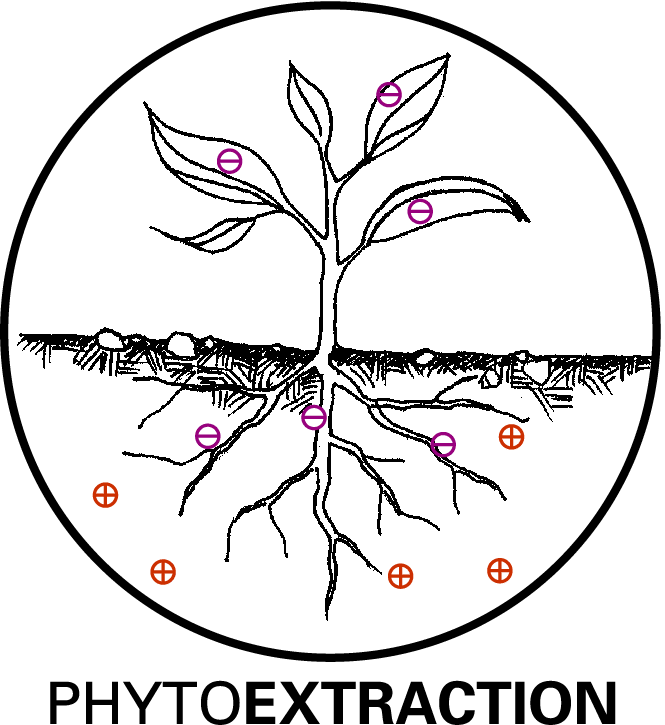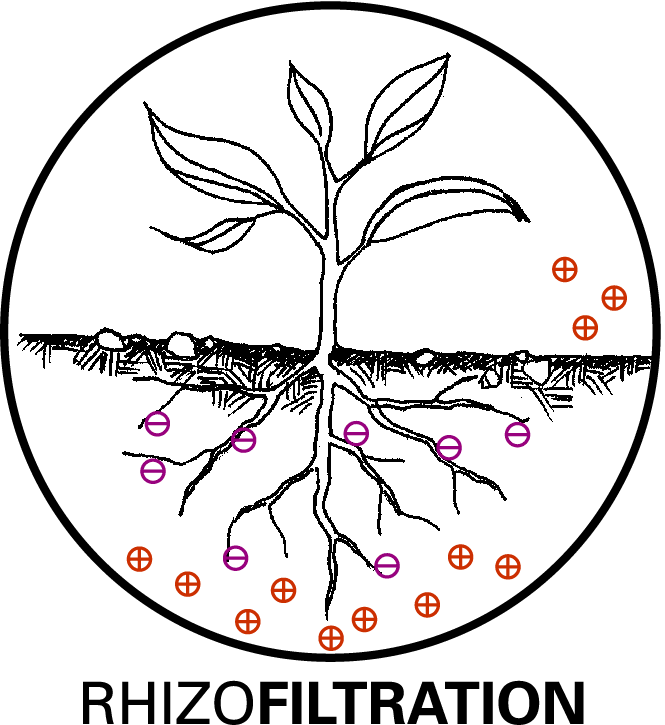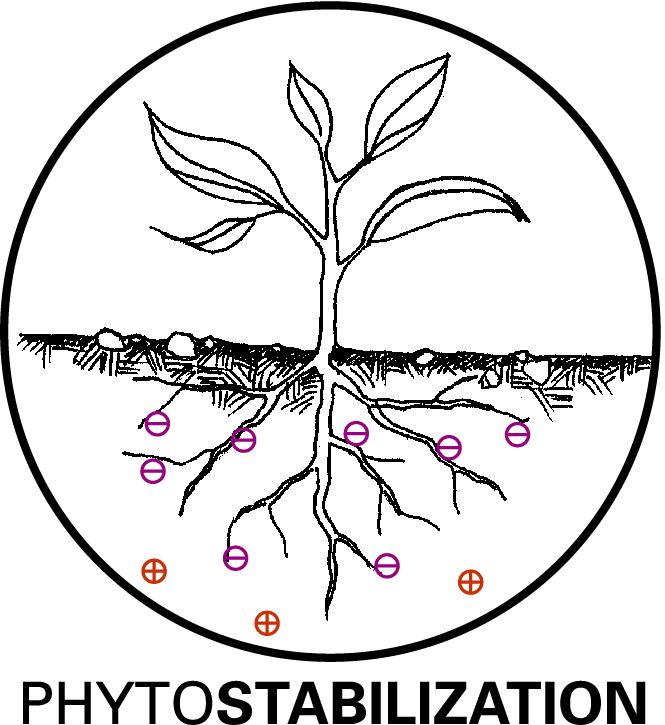| |
|
|
| |
|
| |
|
| |
|
| Components |
|
MECHANISMS Phytoremediation works by one or a combination
of the following mechanisms: |
|
a) degradation through metabolism by plants or enhanced
microbial action;
b) vaporization as the plant transpires;
c) extraction—accumulation, then collection, recycling
or disposal;
d) containment by adsorption or otherwise reducing movement
or availability.
|
|
| Due
to the importance the recycling of nutrients plays in fueling
lifecycles, healthy systems tend to be ‘messy.’
Allowing messy systems to brings regenerative qualienhances
restoration projects by increasing the vitality of plants and
soil organisms, and thus speeding growth and the resultant ability
to cleanse. |
|
| METALS
The mechanisms of metal phytoremediation. |
|
PHYTOEXTRACTION—high biomass metal-accumulating plants
and appropriate soil amendments are used to transport and
concentrate metals from the soil to the roots and/or above-ground
shoots, which are then harvested. These plant parts are
dried, incinerated or composted. Metals are recycled (perhaps
for a net profit) or disposed of as hazardous waste. Soil
amendments, such as metal chelators, facilitate uptake by
releasing metals such as lead which are bound to soil components.
|
 |
|
Examples:
|
|
|
Brake fern (Pteris vittata) hyperaccumulates arsenic
in its above-ground shoots to concentrations 200 times higher
than those found in the soil. Other target metals include
lead, cadmium, chromium, nickel, zinc, and various radionuclides.
|
 |
|
| |
|
|
RHIZOFILTRATION—Plant roots grown in aerated water
precipitate and concentrate heavy metals from polluted effluents.
Example: Hydroponically-grown sunflowers treat
for lead, copper, uranium, strontium, cesium, cobalt and
zinc. Native wetland plants in Georgia are being evaluated
for their ability to remediate acidic contaminated runoff.
|
 |
|
| |
|
|
PHYTOSTABILIZATION—Plants control movement of toxins
from the site either by controlling erosion or movement
by water, or by binding them tightly to their roots, rendering
them unavailable and thus harmless. The contaminants are
not removed from the site.
Example: Poplars.
|
 |
|
|
|
PHYTOVOLATILIZATION—Plants extract volatile metals
from the soil and volatize them from the foliage.
Example: Mercury and selenium can be removed in this
way.
Less research has been conducted in the areas of phytostabilization
and phytovolatilization than on other methods.
|
|
|
EXCESS NUTRIENTS = POLLUTANTS = ESSENTIAL NUTRIENTS
Phosphates and nitrates are essential for plants, but become
water pollutants in excess, and can also be treated by phytoremediation.
|
|
| ORGANIC
CONTAMINANTS
|
|
| The mechanisms
of organic contaminant phytoremediation.
|
|
|
PHYTODEGRADATION—The plants absorb hydrocarbons and
other complex organic molecules, then metabolize or mineralize
them in chemical reactions energized by sunlight.
Example: Some enzymes break down ammunition wastes (explosives),
chlorinated solvents or herbicides.
|
RHIZODEGRADATION (rhizosphere bioremediation)—Microorganisms
in the rhizosphere consume and digest organic substances
for nutrition and energy. Substances released by the plant
roots feed the microorganisms enhancing their activity.
This is plant-enhanced bioremediation.
|
|
|
PHYTOVOLATILIZATION—Plants extract contaminants from
the soil and release the contaminant or a modified form
thereof into the atmosphere via evapotranspiration from
foliage.
Examples: Targets of this technology include PCBs (polychlorinated
biphenyls), TCEs (trichloroethylenes), PAHs (polyaromatic
hydrocarbons), pesticide residues and various explosives.
Poplar trees have been shown to volatilize 90% of the TCE
taken up.
|
 |
|
|
POLLUTED
GROUNDWATER
|
|
The mechanisms of groundwater
phytoremediation
Controls the spread of contaminants by controlling the movement
of groundwater
PHREATOPHYTES (“ground-water plants”)—Take
up large volumes of water, treating deep groundwater by working
as hydraulic pumps.
|
|
| |
|
TRICKS
Plants deprived of a nutrient may take up an element/molecule
of similar “shape,”specifically with the same
number of electrons in the valence shell. This mechanism may
prove to be a design strategy. |
|
| |
|
| |
|
| |
|

